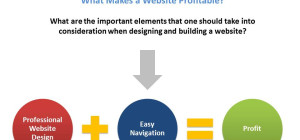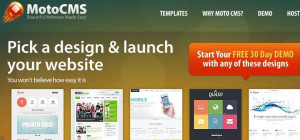 Do you want to build a website but you don’t know where to start? Good news is that making the leap to start creating your own website is the hardest part. Whatever your business is, having a website is helpful. Here are 25 tips to help you out.
Do you want to build a website but you don’t know where to start? Good news is that making the leap to start creating your own website is the hardest part. Whatever your business is, having a website is helpful. Here are 25 tips to help you out.
- Your website needs to have a purpose. You can’t just build a website. Figure out what you need it for. This goal should be the ultimate guide in building the website.
- Write the content yourself. Your website is a platform to communicate with potential customers. Use it to tell people about your business, your mission, and your goals.
- Make your purpose clear. Be straightforward about what your website is for. Make sure visitors find the information they need to get the purpose of your website.
- Offer something your visitors can benefit from. Your website exists for your business but to be effective, it needs to be designed for your visitors. As such, tell potential customers what you can do for them.
- Use call to actions. Make it easy for visitors to do what you want and make your call to action visible.
- Choose a page hierarchy. Do you want a single-page website or do you want a website with a page for different products? Figure that out first.
- Find an inspiration. Browse the web to find a website you like and use it as an inspiration for your own website.
- Prioritize professional feel over personal accomplishment. Building your own website is exciting and awesome. However, visitors won’t care about that at the end of the day. They will focus on how professional the website is and it if has something that attracts them.
- Buy a domain name. Websites with their own domain name look more professional. Plus, you can’t rely on extensions if you want to use your website as a business page. Magicdust suggests, “Making sure the SSL’s used on your website are all purchased under your name.”
- Find reliable hosting services. WordPress is the go-to option for most people. However, there are other platforms. Just be sure to check reviews to make sure they are reliable.
- Think about the future. If you plan to go big in the future, choose platforms that can grow with you. It’s easier to stick to one platform than transferring everything on your website to another place.
- Hire a web designer you like.In case the tasks go beyond your abilities, find someone whose style fits in with what you prefer. Better yet, find the designers behind the websites you bookmarked for inspiration.
- Ask for samples and references. A web designer’s portfolio speaks volumes, and it will help you to find the perfect fit for your project. Of course, asking for references is also a must.
- Think about the scale of the project. While looking for a designer, look for the sample that closely resembles what you want.
- Find the theme that reflects your brand. Themes will make your life easier. You can always hire someone to make some changes.
- Don’t use free themes. Free is not always good. Generic themes are frowned upon, plus it’s more secure to use a premium theme.
- Add a picture. Customers want to know who the team behind the brand is, so adding a picture of you and your crew will make you more relatable.
- Personal stories attract attention. People love inspirational and interesting stories from business owners. If you have one, write about it on your website.
- Make your business reachable. Always put your contact information on your website. Better yet in the header or footer where visitors can see it right away.
- Include a contact form so your visitors don’t have to use their email to get in touch. This doubles as a technique to improve customer service in your e-commerce website.
- Make your content readable. Use fonts that are easy to read and keep design elements to a minimum.
- Use high-quality photos. Don’t settle for cheap stock photos, use images that pop up the page. Better yet, use high-quality images you took yourself.
- Work on a responsive website. It’s the modern age, and you need a website visitors can access whether they are on desktop or mobile.
- Learn about search optimization. Even the basics of SEO will be useful to you.
- Post customer reviews. Reviews will help customers know if you offer great services or not. Adding a testimonial page to your website speaks volumes about your brand.







